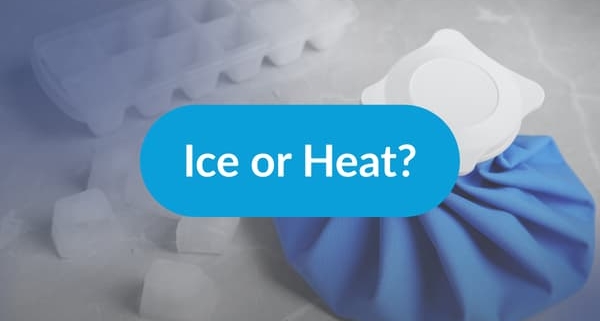Ice or Heat for Back Pain
Should I Use Ice or Heat for Back Pain?
Your Therapy Guide
There aren’t too many things more frustrating than back pain. It’s one of those things that can seriously derail your enjoyment of life, and it generally makes everything that little bit more difficult.
Fortunately, in many cases, there’s a simple way to relieve the pain, and that’s to use ice and heat therapy.
In this blog, we’re going to take a look at some of the key things you’ll need to know to get the most from this type of treatment, when you should use an ice pack and when you should use a heat pack.
What Back Problems Can Ice/Heat Therapy Provide Relief For?
There are some back problems that won’t respond to ice/heat treatment, but it does remain an effective treatment method for many common back problems.
Ice therapy for back pains
Ice for impact injuries
There are certain types of impact injuries that may benefit from ice therapy. These may include:
- Sudden or high impact falls
- High impact injury during sports
- Sudden and sharp pain in the lower back
- Sprains in your lower back
For these types of lower back pain, ice therapy or an ice pack may help to soothe the muscles, reduce any localised inflammation and minimise the pain.
Pushing yourself too – extensive workouts
Many people engage in rigorous exercise and don’t realize that they could be injuring their back. If you haven’t warmed up or cooled down properly, then you could experience pain in the aftermath of your exercise. Not only immediately after your workout, but up to several days after.
This is called delayed onset muscle soreness and may lead to inflammation and pain in your body. Ice therapy immediately after intense exercise may aid in inflammation reduction and reduced tissue damage.
According to a study published in the Journal of Strength and Conditioning Research “cold immediately after exercise or 24 hours later was superior to heat in reducing pain”.
After a day or two, you could switch to heat therapy, as discussed in the following paragraph.
Heat therapy for back pain
Heat therapy helps to promote blood circulation and tissue healing, as well as working to activate and keep muscles moving. After a day or two of using an ice pack, you could switch to use a heat pack.
Also, heat packs may help you first thing in the morning. If you wake up with a stiff or achy back, a heat pack may help warm up your mobiles and increase mobility.
Cold/Heat Therapy Best Practices
Cold and heat therapy can be effective, but only if you use it properly. How you use it will depend on the type of back pain that you’re experiencing.
If you have acute pain, then you’ll use both heat and cold therapy. You should begin with cold therapy, which you’ll place on the affected area for 15 minutes. After that time is up, you should switch to heat therapy.
If your back pain is chronic (as opposed to acute), then you’ll want to use heat therapy only. To get the best results, your pack should be warm (rather than hot) and placed for a longer period of time on your back.
If you find that you have back pain after you’ve engaged in exercise, then be sure to have an ice pack at home. If you place the ice on your back immediately after exercise, you’ll find that your symptoms are much improved.
What to Use
Everything about ice and heat therapy is straightforward, including what you use. You can make your own pack at home, or you can buy a pack from a store. A hot towel or a pack that has been in the microwave will work well. For ice, a pack of vegetables that has been wrapped in a towel will be as good as anything else you could use.
Why do Chiropractors Recommend Ice?
We recommend ice to help reduce blood flow to the area and reduce inflammation to involved joints and muscles.
Should you use ice or heat after a chiropractic adjustment?
This is dependent on the presenting problem. If the inflammation is from a joint (facet) in the spine or disk ice would be the way to go. If the presenting problem is from muscle spasm, heat would be beneficial. Heat would not be recommended directly after a massage or deep tissue work though. If you are unsure always go for ice
When to Explore Different Treatments
This type of treatment is useful for general back pain, but for some problems, you’ll want to look at different options. If there’s any blood involved, then avoid heat and ice. More complicated problems such as spinal cord injuries will require specialist treatment, too.
Get in Touch
Contact Dr. Matthew Alch (Chiropractor) from Sydney Spinal Care today.
Please call 02 9314 1022
References
- Petrofsky JS, Khowailed IA, Lee H, et al. Cold Vs. Heat After Exercise—Is There a Clear Winner for Muscle Soreness. Journal of Strength and Conditioning Research. 2015;29(11):3245-3252. doi:10.1519/jsc.0000000000001127

Matthew has been practicing with Sydney Spinal Care since late 2002. Matthew graduated from Macquarie University with a Bachelor of Chiropractic Science and a Masters of Chiropractic. His friendly nature and caring approach has been a welcomed addition to the Maroubra community as well as the Eastern Suburbs. He is a member of The Chiropractors Association of Australia and is registered with the Australian Health Practitioner Regulation Agency (AHPRA) (registration number: CHI0001306124). Sydney Spinal Care offer affordably priced chiropractic care to all.


